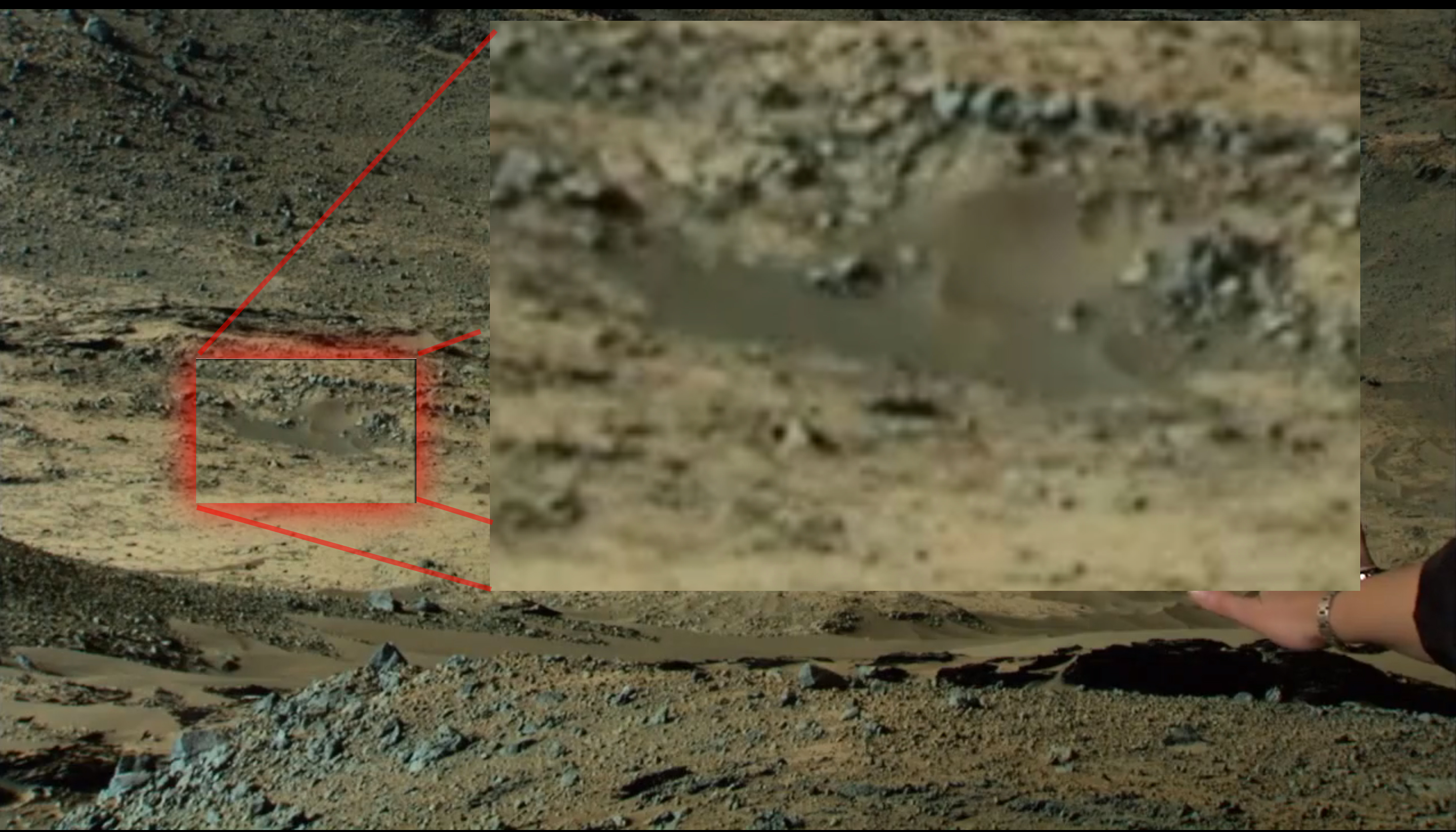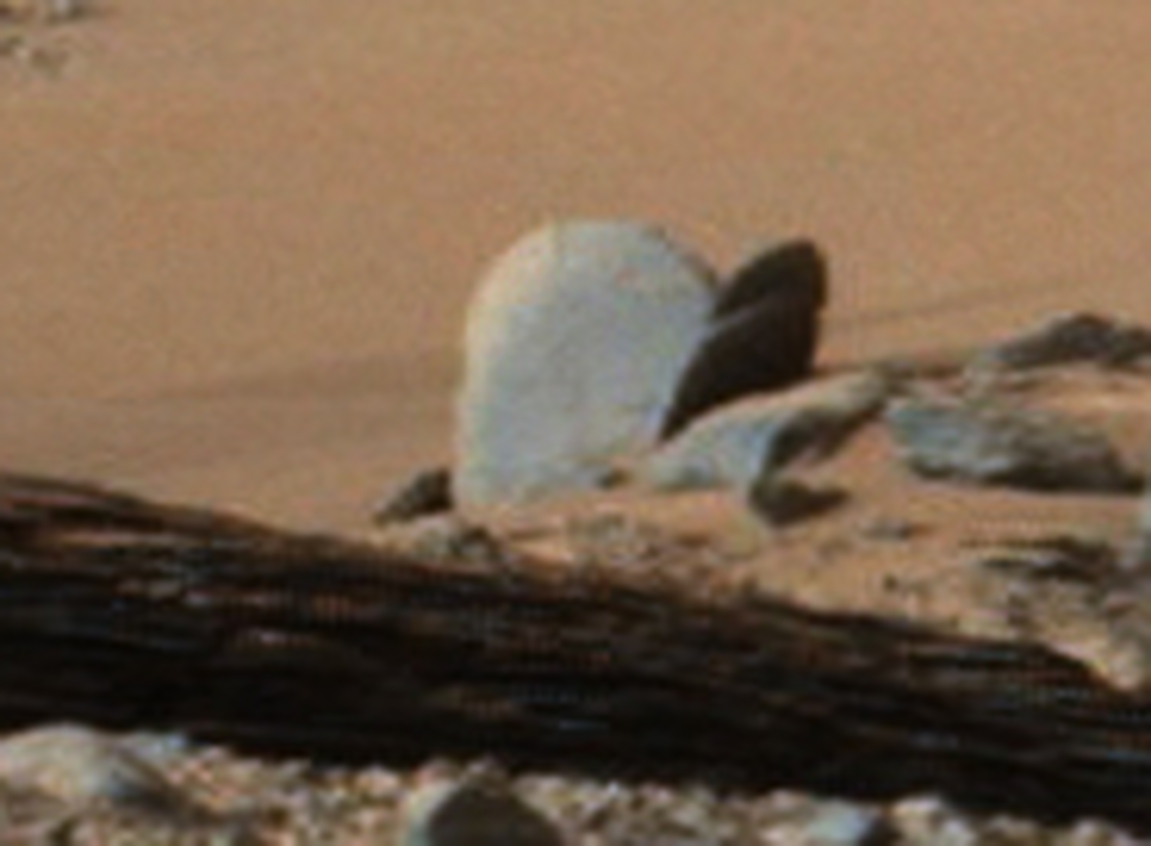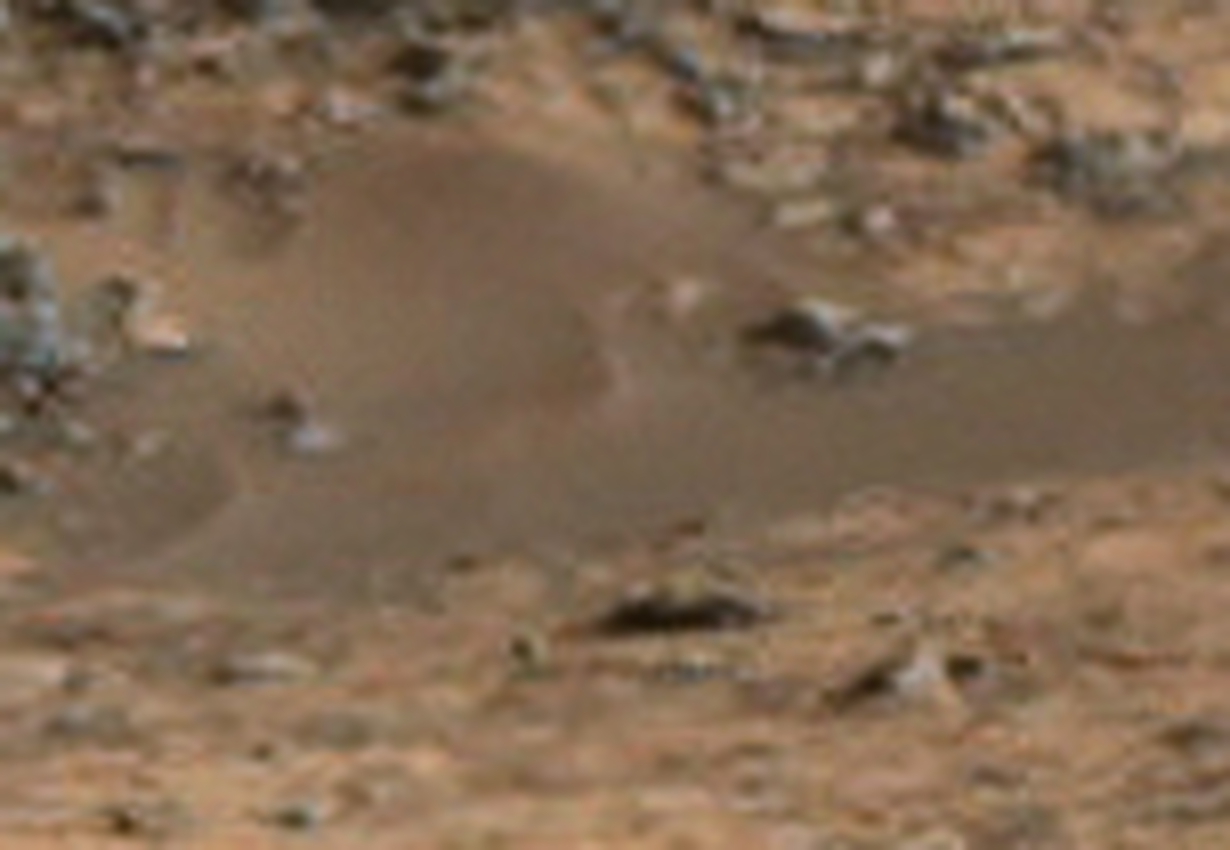It looks like you're using an Ad Blocker.
Please white-list or disable AboveTopSecret.com in your ad-blocking tool.
Thank you.
Some features of ATS will be disabled while you continue to use an ad-blocker.
19
share:
After more than two years of roving almost 9 km (about 5.5 miles), the Curiosity rover has finally reached its general target destination of Mount
Sharp (officially known as "Aeolis Mons").
There is still much roving to do around and up Mount Sharp, but mission planners considered the mountain, along with its walls and canyons of exposed strata, to be the prime target for the rover. The lines of strata (many of which may have been deposited by water) can help geologists investigate what mars was like over the billions of years that these deposits were laid down -- perhaps even during times when mars was a place that was mach more habitable for life.
Curiosity Reaches Mount Sharp to Look for Life's Niches
EDIT TO ADD:
Mission planners have also recently revised the path of the rover's planned initial investigation of the mountain. Based on information they have learned about the topography, they will be heading up the mountain a bit sooner than planned (up a place named 'Pahrump Hills"), but still passing near to the originally-planned entry point "Murray Buttes". This new route still takes them through areas of deposits that seem to have been washed down from the mountain.

NASA’s Mars Curiosity Rover Arrives at Martian Mountain
There is still much roving to do around and up Mount Sharp, but mission planners considered the mountain, along with its walls and canyons of exposed strata, to be the prime target for the rover. The lines of strata (many of which may have been deposited by water) can help geologists investigate what mars was like over the billions of years that these deposits were laid down -- perhaps even during times when mars was a place that was mach more habitable for life.
Curiosity Reaches Mount Sharp to Look for Life's Niches
EDIT TO ADD:
Mission planners have also recently revised the path of the rover's planned initial investigation of the mountain. Based on information they have learned about the topography, they will be heading up the mountain a bit sooner than planned (up a place named 'Pahrump Hills"), but still passing near to the originally-planned entry point "Murray Buttes". This new route still takes them through areas of deposits that seem to have been washed down from the mountain.
Curiosity’s trek up the mountain will begin with an examination of the mountain's lower slopes. The rover is starting this process at an entry point near an outcrop called Pahrump Hills, rather than continuing on to the previously-planned, further entry point known as Murray Buttes. Both entry points lay along a boundary where the southern base layer of the mountain meets crater-floor deposits washed down from the crater’s northern rim.
"It has been a long but historic journey to this Martian mountain,” said Curiosity Project Scientist John Grotzinger of the California Institute of Technology in Pasadena. “The nature of the terrain at Pahrump Hills and just beyond it is a better place than Murray Buttes to learn about the significance of this contact. The exposures at the contact are better due to greater topographic relief."

NASA’s Mars Curiosity Rover Arrives at Martian Mountain
edit on 9/12/2014 by Soylent Green Is People because: (no reason given)
Fantastic! I'm excited to see the new findings that Curiosity will bring us. Perhaps some evidence of microbial life?
Just throwing this out there: even though human spaceflight is entirely more expensive and complex, having some boots on the ground on Mars would allow much more exploration and science to be done in a much quicker manner.
Food for thought.
Just throwing this out there: even though human spaceflight is entirely more expensive and complex, having some boots on the ground on Mars would allow much more exploration and science to be done in a much quicker manner.
Food for thought.
Is it just me or did they blur something out in the photo... in the video she starts by pointing strait at it... lol.

edit to add...
Yep! definitely blurred lol...


edit to add...
Yep! definitely blurred lol...

edit on 13-9-2014 by pianopraze because: added photo
I love how scientists always qualify their statements with: "our study is only just beginning"...
Job security at it's finest...lol
Job security at it's finest...lol
a reply to: pianopraze
Nope. Definitely a pile of dust. Just like many others.
mars.jpl.nasa.gov...
Yep! definitely blurred lol...
Nope. Definitely a pile of dust. Just like many others.
mars.jpl.nasa.gov...
edit on 9/13/2014 by Phage because: (no reason
given)
I guess this headline is akin to the "Voyager has left the Solar System" headline - it's debatable and is based on arbitrary factors. (The Voyager
hasn't even reached Sedna's average distance from the Sun)
It might be another year before Curiosity is actually climbing the slopes of Mt Sharp.
However, every little headline-worth achievement helps, even if Curiosity has only reached the very edges of Mt Sharp's outlying slopes.
It might be another year before Curiosity is actually climbing the slopes of Mt Sharp.
However, every little headline-worth achievement helps, even if Curiosity has only reached the very edges of Mt Sharp's outlying slopes.
a reply to: wildespace
Yes, they are taking liberties with the exact boundary of what they are calling Mount Sharpe. Lots of sandy areas ahead, and the Rover actually hasn't entered the Buttes as yet. I'm not sure if mountains on Earth are measured this way, with their vast outlying edges defined as part of the mountain themselves.
Yes, they are taking liberties with the exact boundary of what they are calling Mount Sharpe. Lots of sandy areas ahead, and the Rover actually hasn't entered the Buttes as yet. I'm not sure if mountains on Earth are measured this way, with their vast outlying edges defined as part of the mountain themselves.
originally posted by: wildespace
I guess this headline is akin to the "Voyager has left the Solar System" headline - it's debatable and is based on arbitrary factors. (The Voyager hasn't even reached Sedna's average distance from the Sun)
It might be another year before Curiosity is actually climbing the slopes of Mt Sharp.
However, every little headline-worth achievement helps, even if Curiosity has only reached the very edges of Mt Sharp's outlying slopes.
I think Voyager leaves the Solar system every 6 months these days...
edit on 16-9-2014 by Xeven because: (no reason given)
new topics
-
Thousands Of Young Ukrainian Men Trying To Flee The Country To Avoid Conscription And The War
Other Current Events: 10 minutes ago -
12 jurors selected in Trump criminal trial
US Political Madness: 2 hours ago -
Iran launches Retalliation Strike 4.18.24
World War Three: 3 hours ago -
Israeli Missile Strikes in Iran, Explosions in Syria + Iraq
World War Three: 3 hours ago -
George Knapp AMA on DI
Area 51 and other Facilities: 9 hours ago -
Not Aliens but a Nazi Occult Inspired and then Science Rendered Design.
Aliens and UFOs: 9 hours ago -
Louisiana Lawmakers Seek to Limit Public Access to Government Records
Political Issues: 11 hours ago
top topics
-
BREAKING: O’Keefe Media Uncovers who is really running the White House
US Political Madness: 16 hours ago, 25 flags -
George Knapp AMA on DI
Area 51 and other Facilities: 9 hours ago, 24 flags -
Biden--My Uncle Was Eaten By Cannibals
US Political Madness: 17 hours ago, 19 flags -
Israeli Missile Strikes in Iran, Explosions in Syria + Iraq
World War Three: 3 hours ago, 12 flags -
"We're All Hamas" Heard at Columbia University Protests
Social Issues and Civil Unrest: 17 hours ago, 7 flags -
Louisiana Lawmakers Seek to Limit Public Access to Government Records
Political Issues: 11 hours ago, 7 flags -
Not Aliens but a Nazi Occult Inspired and then Science Rendered Design.
Aliens and UFOs: 9 hours ago, 5 flags -
So I saw about 30 UFOs in formation last night.
Aliens and UFOs: 14 hours ago, 5 flags -
Iran launches Retalliation Strike 4.18.24
World War Three: 3 hours ago, 5 flags -
Do we live in a simulation similar to The Matrix 1999?
ATS Skunk Works: 15 hours ago, 4 flags
active topics
-
MULTIPLE SKYMASTER MESSAGES GOING OUT
World War Three • 46 • : Zaphod58 -
Elites disapearing
Political Conspiracies • 30 • : SchrodingersRat -
Not Aliens but a Nazi Occult Inspired and then Science Rendered Design.
Aliens and UFOs • 10 • : OmegaLogos -
12 jurors selected in Trump criminal trial
US Political Madness • 21 • : VictorVonDoom -
British TV Presenter Refuses To Use Guest's Preferred Pronouns
Education and Media • 64 • : Degradation33 -
Iran launches Retalliation Strike 4.18.24
World War Three • 14 • : Cloudbuster1 -
Thousands Of Young Ukrainian Men Trying To Flee The Country To Avoid Conscription And The War
Other Current Events • 0 • : Consvoli -
African "Newcomers" Tell NYC They Don't Like the Free Food or Shelter They've Been Given
Social Issues and Civil Unrest • 17 • : SchrodingersRat -
Canadian Forces bow out and loose interest in UFO’s
Aliens and UFOs • 20 • : Ophiuchus1 -
Israeli Missile Strikes in Iran, Explosions in Syria + Iraq
World War Three • 50 • : WeMustCare
19


